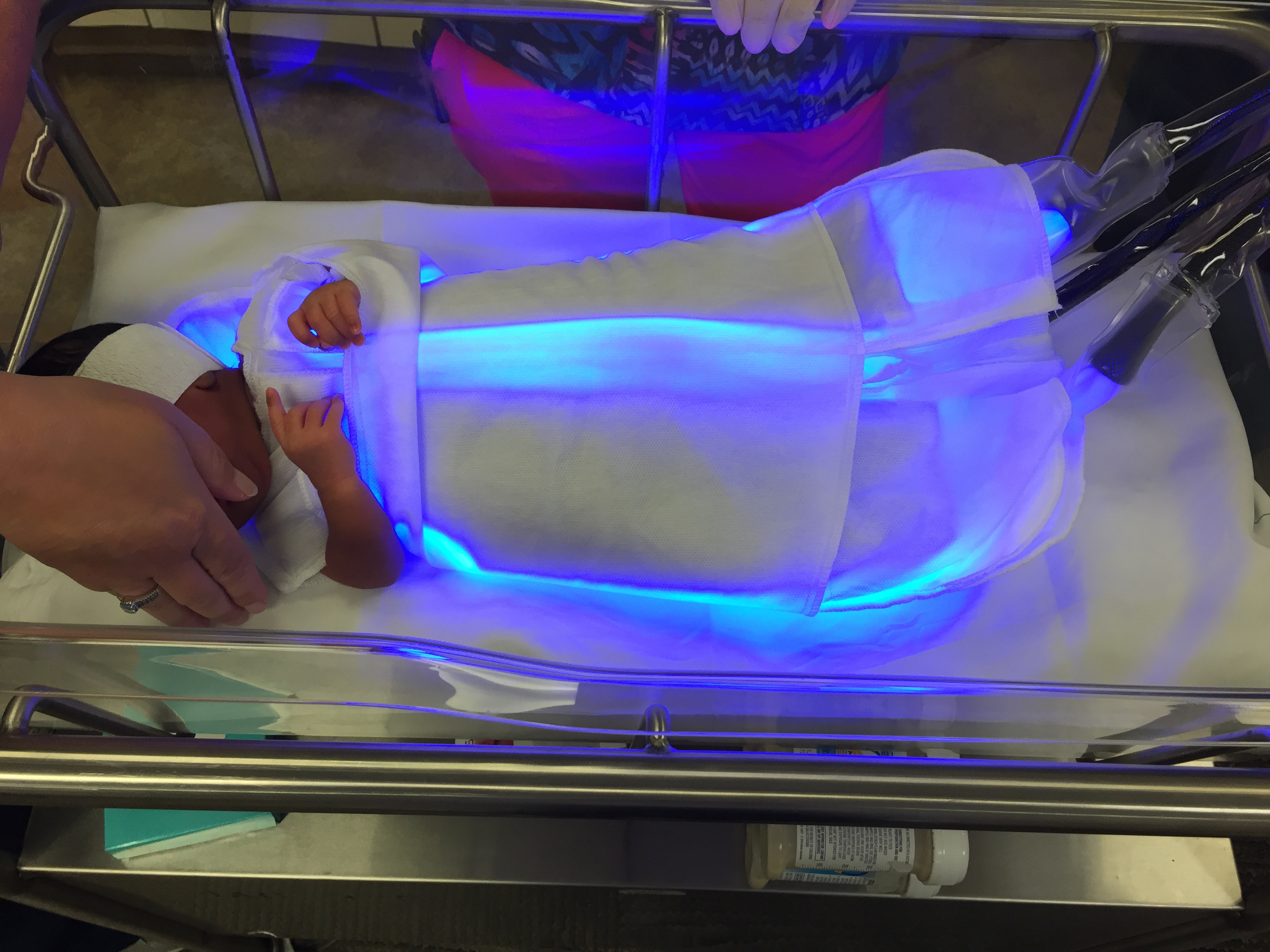Innovative Phototherapy Sleep Sack Could be a Game-Changer in Treating Newborn Jaundice
November 21, 2017

UH Innovations in Pediatrics - December 2017
Special Innovators Issue
 Katherine Griswold, MD
Katherine Griswold, MDAs common as jaundice is among newborns, the standard treatment can be uncomfortable for the baby and therefore less effective than it otherwise might be.
“Phototherapy using overhead lights or fiber-optic pads is the standard of care for treating hyperbilirubinemia in the newborn period,” says Katherine Griswold, MD, Pediatrician, UH Rainbow Babies & Children’s Hospital and Assistant Professor of Pediatrics, Case Western Reserve University School of Medicine, runs the Well Baby Nursery at University Hospitals Rainbow Babies & Children’s Hospital. “However, during overhead phototherapy, the newborn must be undressed and wear eye protection. Given that most infants like to be swaddled, they are often fussy under phototherapy. This leads to parental non-compliance with the treatment and parental dissatisfaction. In addition, newborns cannot be held when under overhead phototherapy, which decreases parent-infant bonding.”
Thanks to some ingenuity by Dr. Griswold and collaborators with a medical device company, shortcomings such as these may soon be a thing of the past. They’ve developed a phototherapy sleep sack that wraps the infant in fiber optic blue light to decrease the infant’s bilirubin – the byproduct that causes jaundice. But unlike a typical flat “bili blanket” pad, the sleep sack allows the infant to be swaddled, held and fed while being treated, decreasing treatment interruptions and increasing comfort. The project was selected for support at UH Rainbow Babies & Children’s Hospital’s Belcher-Weir Family Pediatric Innovation Day, sponsored by UH Rainbow’s Office of Innovation.
 Phototherapy sleep sack
Phototherapy sleep sack“We thought, ‘If we could take the bili blanket and wrap it around the baby and take away the overhead lights, wouldn’t that be great,” Dr. Griswold says. “If there was a way to get the light into the sleep sack, that was the goal. The baby would be happier and the mom would be happier.”
The new phototherapy sleep sack accomplishes these goals, Dr. Griswold says.
“The new design eliminates the need for overhead phototherapy so the newborn may not need to wear eye protection,” she says. “In addition, the baby can be held and fed while inside the phototherapy sleep sack so there is no decrease in treatment efficacy and there is an increased opportunity for parent-infant bonding.
At UH Rainbow, Dr. Griswold is conducting a pilot study to test whether the assumptions behind the new sleep sack design hold true.
“Our pilot study is 10 newborns,” she says. “So far, we’ve tried it with two patients and it’s seemed to work well. The goal is to see if it affects length of stay and whether they get readmitted. We’re just proving concept right now – does this do what we think it should? In the future, we hope to further compare the phototherapy sleep sack with standard phototherapy and evaluate whether increased parental compliance with treatment decreases hospital length of stay.”
Once the results of the pilot study are in, families may even be able to use the phototherapy sleep sack to treat their infant at home.
“A pediatrician may be able to prescribe it as a piece of durable medical equipment that will be returned,” Dr. Griswold says. “If the device works and our patients are happier with it, it’s a home run.”
For more information about this research, please email Peds.Innovations@UHhospitals.org.


